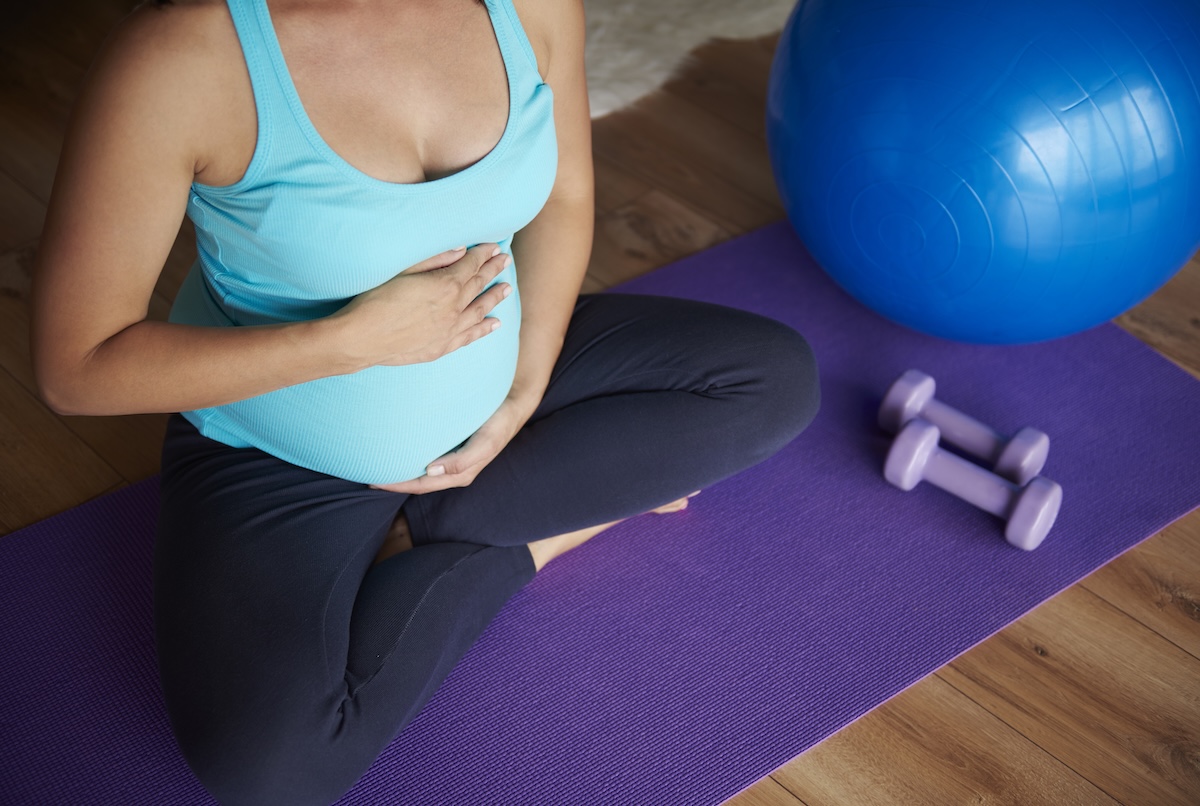Staying active during pregnancy is one of the best things you can do for your body and your baby. Exercises can help you sleep better, reduce back pain, improve your mood, and prepare your body for labor. It can also help you maintain a healthy weight and recover more easily after giving birth.

You don’t need a gym or fancy equipment to stay fit while pregnant. Many gentle and effective exercises can be done right at home. These moves are designed to be low-impact and safe for most pregnancies. Still, it’s always a good idea to check with your doctor before starting any new routine—especially if you have a high-risk pregnancy or other medical concerns.
Below are seven simple home exercises that can help you stay strong, flexible, and comfortable throughout your pregnancy.
1. Walking in Place to Keep Moving
Walking is one of the safest and easiest ways to get your heart rate up during pregnancy. If going outside isn’t possible, walking in place at home is a great alternative. You can do it while watching TV, listening to music, or even during breaks at work.
Marching in place helps improve blood flow, supports circulation, and keeps your joints moving without putting too much pressure on your knees or hips. You can increase intensity by lifting your knees a little higher or swinging your arms gently. Just 10 to 15 minutes at a time a few times a day can add up to great benefits for your energy and mood.
2. Cat-Cow Stretch for Back Relief
The cat-cow stretch is a yoga-inspired move that gently stretches your spine and helps relieve back pain—a common issue during pregnancy. It also strengthens your core and helps improve posture, especially as your belly grows.
Start on your hands and knees in a tabletop position. On an inhale, lift your head and tailbone, letting your belly drop toward the floor (cow pose). On an exhale, round your back like a cat, pulling your belly in and tucking your chin to your chest. Move slowly between these two positions for 5 to 10 rounds. This stretch is gentle and can be done daily to help with tension in your lower back and hips.
3. Wall Push-Ups for Upper Body Strength
Wall push-ups are a safe and simple way to strengthen your arms, shoulders, and chest during pregnancy. They are much easier on your core and back than regular push-ups on the floor, making them a better option as your belly grows.
Stand about two feet away from a wall. Place your hands flat on the wall at shoulder height. Bend your elbows and lean your body toward the wall, then press back to your starting position. Keep your body straight and your feet flat on the floor. Try doing 10 to 15 reps at your own pace. As you get stronger, you can do more sets or add a slight incline by using a counter or sturdy table instead of a wall.
Pelvic Tilts to Support Core and Pelvic Floor
Pelvic tilts help strengthen your lower back and abdominal muscles, and they support the pelvic floor muscles—which are key for labor and postpartum recovery.
Lie on your back with your knees bent and feet flat on the floor. (In later pregnancy, do this move on your hands and knees or standing against a wall to avoid lying flat for too long.) Gently tilt your pelvis upward, flattening your lower back against the floor or wall. Hold for a few seconds, then release. Repeat this movement slowly for 10 to 15 reps. Focus on controlled motion and breathing evenly. These can be done daily to improve stability and reduce discomfort in the lower back.
Side-Lying Leg Lifts for Hips and Glutes
Strengthening your hips and glutes can help support your growing belly and reduce pressure on your back and knees. Side-lying leg lifts are easy to do and don’t require any equipment.
Lie on your side with your legs straight and stacked. Rest your head on your arm or a pillow for support. Slowly lift your top leg as high as is comfortable, then lower it back down. Keep the movement smooth and controlled. Do 10 to 15 reps on each side. This exercise helps build strength and stability, especially in the second and third trimesters when balance becomes more of a challenge.
Seated Arm Circles for Gentle Upper Body Movement
If you’re looking for a low-impact way to keep your arms and shoulders active, seated arm circles are perfect. They improve blood flow, relieve tension, and gently work the muscles in your upper body.
Sit in a sturdy chair with your back straight. Extend your arms out to the sides at shoulder height. Make small, slow circles forward for 10 to 15 seconds, then reverse the direction. You can also try raising and lowering your arms or adding light hand weights for a little extra resistance. This move is safe to do anytime and can help reduce shoulder stiffness from sitting or sleeping in different positions during pregnancy.
Kegels for Pelvic Floor Strength
Kegel exercises are all about strengthening the muscles that support your bladder, uterus, and bowels. These muscles play a big role during labor and also help with bladder control after the baby arrives.
To do a Kegel, contract the muscles you would use to stop the flow of urine. Hold the contraction for about five seconds, then relax for five seconds. Work up to holding for 10 seconds at a time. Do sets of 10 reps, three times a day. You can do Kegels while sitting, standing, or even lying down. No one can tell you’re doing them, so they’re easy to fit into your day.

